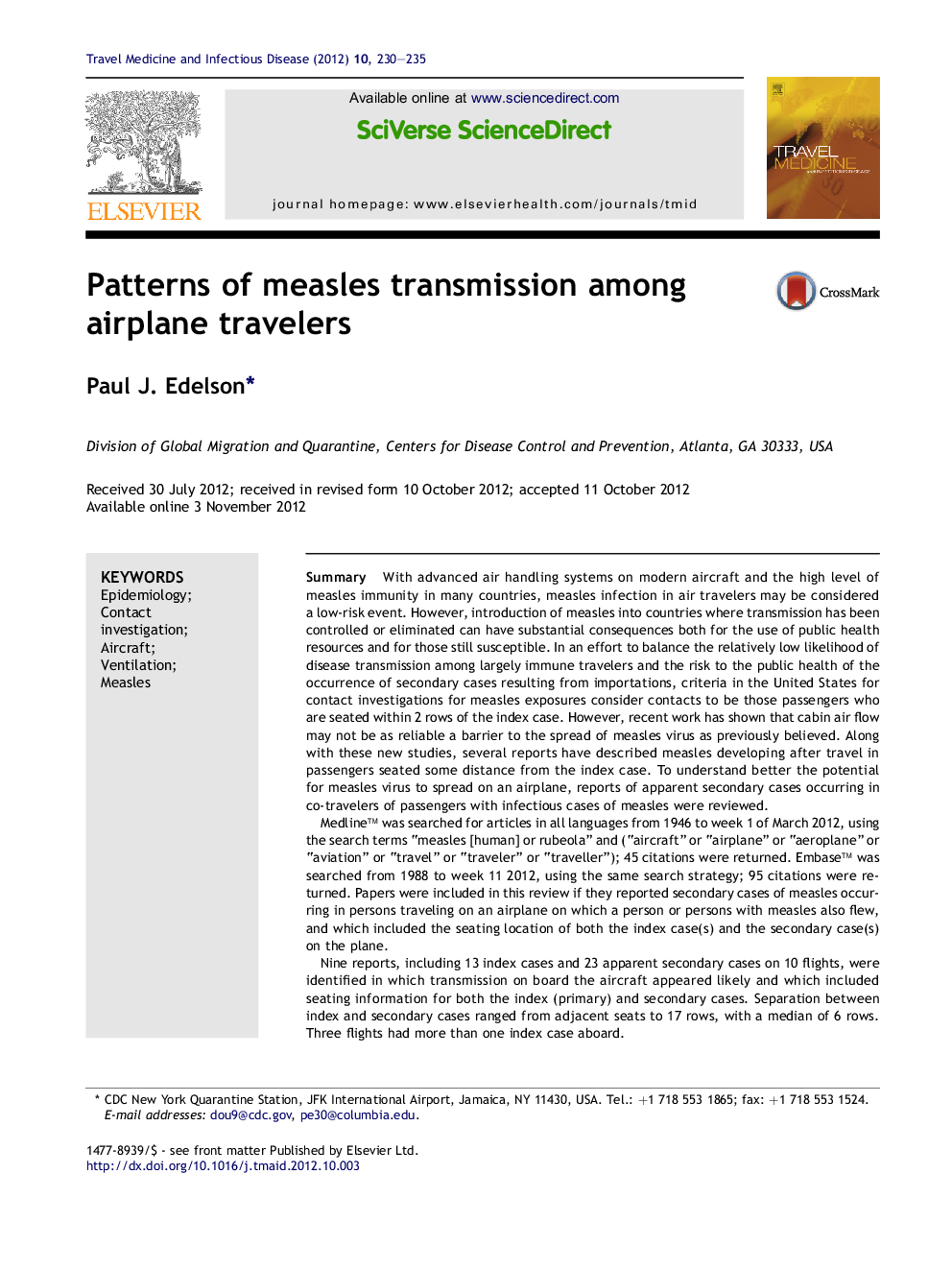| کد مقاله | کد نشریه | سال انتشار | مقاله انگلیسی | نسخه تمام متن |
|---|---|---|---|---|
| 3393078 | 1592705 | 2012 | 6 صفحه PDF | دانلود رایگان |

SummaryWith advanced air handling systems on modern aircraft and the high level of measles immunity in many countries, measles infection in air travelers may be considered a low-risk event. However, introduction of measles into countries where transmission has been controlled or eliminated can have substantial consequences both for the use of public health resources and for those still susceptible. In an effort to balance the relatively low likelihood of disease transmission among largely immune travelers and the risk to the public health of the occurrence of secondary cases resulting from importations, criteria in the United States for contact investigations for measles exposures consider contacts to be those passengers who are seated within 2 rows of the index case. However, recent work has shown that cabin air flow may not be as reliable a barrier to the spread of measles virus as previously believed. Along with these new studies, several reports have described measles developing after travel in passengers seated some distance from the index case. To understand better the potential for measles virus to spread on an airplane, reports of apparent secondary cases occurring in co-travelers of passengers with infectious cases of measles were reviewed.Medline™ was searched for articles in all languages from 1946 to week 1 of March 2012, using the search terms “measles [human] or rubeola” and (“aircraft” or “airplane” or “aeroplane” or “aviation” or “travel” or “traveler” or “traveller”); 45 citations were returned. Embase™ was searched from 1988 to week 11 2012, using the same search strategy; 95 citations were returned. Papers were included in this review if they reported secondary cases of measles occurring in persons traveling on an airplane on which a person or persons with measles also flew, and which included the seating location of both the index case(s) and the secondary case(s) on the plane.Nine reports, including 13 index cases and 23 apparent secondary cases on 10 flights, were identified in which transmission on board the aircraft appeared likely and which included seating information for both the index (primary) and secondary cases. Separation between index and secondary cases ranged from adjacent seats to 17 rows, with a median of 6 rows. Three flights had more than one index case aboard.Based on previously published data, it is not possible to say how unusual cases of measles transmission among air travelers beyond the usual zone of contact investigation (the row the index case sat in and 2 rows ahead of or behind that row) may be. The fact that several flights had more than one infectious case aboard and that all but two index cases were in the prodromal phase may be of importance in understanding the wider spread described in several of the reviewed reports. Although the pattern of cabin air flow typical of modern commercial aircraft has been considered highly effective in limiting the airborne spread of microorganisms, concerns have been raised about relying on the operation of these systems to determine exposure risk, as turbulence in the cabin air stream is generated when passengers and crew are aboard, allowing the transmission of infectious agents over many rows. Additionally, the characteristics of some index cases may reflect a greater likelihood of disease transmission. Investigators should continue to examine carefully both aircraft and index-case factors that may influence disease transmission and could serve as indicators on a case-by-case basis to include a broader group of travelers in a contact investigation.
Journal: Travel Medicine and Infectious Disease - Volume 10, Issues 5–6, September–November 2012, Pages 230–235